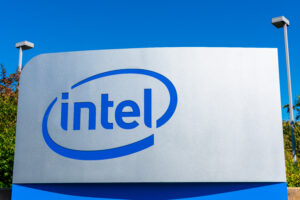As an IT leader, you face the challenge of building and scaling applications to meet the demands of the modern digital landscape. Cloud-native architectures provide a solution, enabling enterprises like yours to innovate in a scalable, agile manner. In this article, we explore the shift towards cloud-native and how adopting these modern architectural patterns positions your organization for future success. You can accelerate development and seamlessly manage resources across cloud environments by leveraging containers, microservices, and APIs.
We discuss critical considerations around culture, processes, and technology when transitioning. Cloud-native brings immense opportunity but also requires new ways of working. Read on to understand how leading enterprises evolve to unlock innovation and gain a competitive edge through these modern architectural practices.
What Is a Cloud-Native Architecture?
Built for the Cloud
- The design of cloud-native architecture is specific for a cloud environment. The application build is similar to microservices – independent components that work together. They are highly automated, using infrastructure as code, and the design caters to continuous integration and delivery.
Scalable and Resilient
- Cloud-native applications are built to scale rapidly up and down. The design is fault-tolerant, with redundancy and self-healing mechanisms. If one part fails, the application continues running. Applications can scale to handle huge traffic spikes and then back down when demand decreases.
Containerized and Dynamic
- In a cloud-native architecture, applications are containerized using technologies like Docker. Containers are lightweight and portable, allowing applications to run on any platform. Utilizing Kubernetes to orchestrate containers and automate deployment, the resources also dynamically allocate and de-allocate as necessary.
Agile and Innovative
- A cloud-native approach enables fast development cycles and quick iterations. Development and delivery of new features can occur frequently through continuous integration and continuous delivery pipelines. Enterprises adopting cloud-native architectures can innovate quickly and gain a competitive advantage. They can provide new digital services to meet changing customer needs and stay ahead of the competition.
The Future of Enterprise IT
- Cloud-native architectures represent the future of enterprise IT. They enable innovation, scalability, and resilience. By modernizing legacy applications and adopting cloud-native development practices, enterprises can gain agility and better meet the demands of digital transformation.
The Shift Towards Cloud-Native Architectures

i. Agility and Scalability
- Enterprises are moving towards cloud-native architectures to build and scale applications with agility in a modern cloud environment. Cloud-native architectures allow businesses to adapt quickly to changes and scale rapidly based on demand. Breaking applications into smaller, independent services so they can develop, undergo testing, deploy, and scale independently.
ii. Microservices and Containers
- Cloud-native architectures rely on microservices and containers. Microservices are small, independent components that work together, enabling continuous delivery of large, complex applications. Containers package microservices with dependencies and configuration, allowing them to run uniformly and consistently on any infrastructure.
iii. Orchestration and Automation
- Orchestration and automation tools are essential for managing cloud-native architectures. Container orchestration platforms automate container deployment, scaling, and management. Continuous integration and continuous delivery (CI/CD) pipelines automate application build, test, and release processes. Infrastructure as Code (IaC) automates infrastructure provisioning and management.
iv. The Cloud-Native Toolkit
- A variety of open-source technologies have emerged to enable cloud-native development. Kubernetes is the most widely used container orchestration platform. Docker is the most popular container runtime. CI/CD tools like Jenkins, CircleCI, and TravisCI enable continuous integration and delivery. IaC tools like Terraform, Ansible, and Chef automate infrastructure provisioning and configuration management.
v. The Future is Cloud-Native
- Cloud-native architectures are paving the way for enterprise innovation. With the right tools and strategies, businesses can build and scale next-generation applications to deliver value to their customers faster. The future is cloud-native.
Key Benefits of Cloud-Native Architectures for Enterprises
Enhanced Agility
- Cloud-native architectures enable enterprises to become more agile in building and deploying applications. Using microservices and containers, applications can be broken down into isolated components that can be developed, tested, and deployed independently. This modular approach accelerates development cycles and simplifies updating or replacing components. Scaling applications on demand to meet spikes in usage is possible.
Improved Scalability
- Cloud platforms provide enterprises with virtually unlimited scalability. Microservices and containers can replicate instantly across regions and availability zones. This makes applications highly available and resilient to failures. Enterprises only pay for the resources they use, scaling up and down as needed. This on-demand scalability reduces costs and ensures optimal performance.
Increased Flexibility
- Cloud-native architectures are not tied to a specific platform or technology. Microservices and containers are portable across clouds and on-premises infrastructure. This provides flexibility to deploy applications wherever makes the most business sense. Enterprises can also embrace emerging technologies as needed without re-architecting the entire application. This flexibility future-proofs cloud-native applications and reduces vendor lock-in.
Heightened Security
- While public clouds offer security capabilities, enterprises maintain responsibility for securing their applications and data. Cloud-native architectures incorporate security best practices, with each microservice and container providing only essential resources. This minimizes the potential attack surface. Microservices and containers are ephemeral, only lasting as long as the task requires. Any compromised components can be quickly replaced, limiting damage. Strict controls on access and encryption of data at rest and in transit further strengthen security.
In summary, cloud-native architectures significantly benefit enterprise innovation and digital transformation. Agility, scalability, flexibility, and security are key drivers for enterprises adopting cloud-native architectures and paving the way for building future-ready applications. With the right people, processes, and tools in place, enterprises can harness the full potential of the cloud.
Challenges in Moving to Cloud-Native
1. Resistance to Change
- Enterprises accustomed to legacy architectures often face resistance to transitioning to cloud-native solutions. There may be sunk costs in existing infrastructure and applications and familiarity with outdated systems. However, failing to modernize and take advantage of cloud-native benefits will severely limit an organization’s ability to innovate and scale. With education and by demonstrating cloud-native advantages, technology leaders can gain buy-in and begin the shift.
2. Lack of Cloud Skills
- Building cloud-native applications requires skills that differ from traditional enterprise development. Engineers must be versed in containers, microservices, and continuous integration/continuous delivery (CI/CD) pipelines. They must also be fluent in cloud services from major providers like AWS, Azure, and GCP. Upskilling or hiring engineers with these cloud-native skills is crucial to success.
3. Security Concerns
- Some perceive public cloud infrastructure as less secure than on-premises data centers. However, major cloud providers offer a range of security tools and best practices to safeguard data and applications appropriately. With the right cloud security strategy and measures in place, organizations can address risks around data privacy, access control, and compliance. Education on cloud security options and benefits can help alleviate these concerns.
4. Vendor Lock-in
- When building on a single cloud platform, there is a risk of being tied to that vendor and their services. To avoid lock-in, organizations should develop applications with portability in mind. This means loosely coupling services, using open standards, and abstracting infrastructure dependencies. Multi-cloud or hybrid cloud strategies, where workloads span platforms, also provide more flexibility and control. With the right cloud architecture decisions, organizations can avoid being locked into any one vendor.
Migrating to cloud-native enterprise solutions presents challenges, but organizations can overcome these obstacles and reap the benefits of innovation at scale with the right skills, strategy, and mindset. With a forward-looking approach, enterprises can build for future success in a cloud-first world.
Cloud-Native Architectures: Building for the Future
Scalability and Agility
- Cloud-native architectures are designed to leverage the cloud’s scalability and agility. Applications are broken into microservices that can be independently deployed, upgraded, and scaled. This modular approach allows enterprises to build and deploy features faster while handling increased traffic and demand. Resources can be provisioned and de-provisioned on demand, optimizing cost efficiency.
Containerization and Orchestration
- Cloud-native architectures rely on containers and container orchestration platforms to deploy and manage microservices. Containers package microservices with their dependencies and configurations, allowing them to run uniformly regardless of the environment. Container orchestrators like Kubernetes automate containerized microservices’ deployment, scaling, and management.
Continuous Integration and Delivery
- The cloud-native approach utilizes continuous integration and continuous delivery (CI/CD) to frequently build, test, and release software updates. With CI/CD, automatically integrate, build, and test new codes. This allows enterprises to release software updates on demand, accelerating innovation.
Infrastructure as Code
- In cloud-native architectures, infrastructure is managed and provisioned through code. This “infrastructure as code” approach uses configuration files to automate the setup and management of resources like virtual machines, networks, and load balancers. Infrastructure as code increases speed and consistency allows versioning of resources and treats infrastructure like any other software.
Observability
- Cloud-native applications generate huge volumes of data and metrics. To manage this complexity, cloud-native architectures focus on “observability” – the ability to collect and analyze data to understand systems’ overall health and performance. Tools like distributed tracing, logging, and monitoring give developers insight into their microservices and enable faster troubleshooting.
Cloud-native architectures provide a framework for building and running scalable, resilient enterprise systems. By emphasizing modularity, automation, and observability, cloud-native approaches pave the way for accelerated innovation.
Key Takeaways
As we have seen, the shift towards cloud-native architectures is already well underway, offering enterprises greater agility, scalability, and innovation capabilities. By embracing practices like containers, microservices, and immutable infrastructure, companies can develop and deploy modern applications optimized for the cloud. This is key to staying competitive and meeting changing business demands in today’s digital landscape. While the transition may seem daunting initially, the long-term benefits are immense. With careful planning, strong leadership, and a willingness to transform, enterprises can pave the way for a successful cloud-native future. The possibilities are endless if organizations are bold enough to build for what is next.
More Stories
Nokia Powers Next-Gen PON and Wi-Fi 7 Evolution
With the introduction of their co-existence network solution, advanced Wi-Fi 7 gateways, and a high-density 25G PON line card, Nokia empowers operators to meet the increasing demand for robust, high-capacity networks.
Perplexity Labs: Transforming Prompts into Dynamic Reports and Dashboards
As a professional in today’s fast-changing digital world, you need tools that go beyond traditional limitations. That’s where Perplexity Labs comes in—an innovative feature from Perplexity AI, available only to Pro subscribers. It turns your creative prompts into detailed reports, interactive dashboards, spreadsheets, and even full web applications.
Instagram Edits Empowers Creators with Pro-Level Mobile Video Tools
Instagram unveiled Edits, their groundbreaking mobile video editing app designed to elevate the quality of Reels and short-form videos to empower creators.
Google’s AI Edge App Brings Offline Intelligence to Your Phone
The new AI Edge App from Google reshapes mobile technology as it brings artificial intelligence directly to your smartphone.
Salesforce Accelerates AI-Driven Cloud Data Integration with Informatica Acquisition
Salesforce acquires Informatica in a deal valued at around $8 billion as part of a bold move to redefine its approach to cloud data management.
Samsung’s AI Power Play: Perplexity Partnership Signals Shift from Google
Samsung is poised to redefine AI in its Galaxy smartphones through a bold strategic move. It has partnered with Perplexity AI, an innovative U.S.-based startup. This signals a possible shift away from Google’s AI ecosystem. As a result, Samsung may integrate Perplexity’s advanced assistant into its devices.


